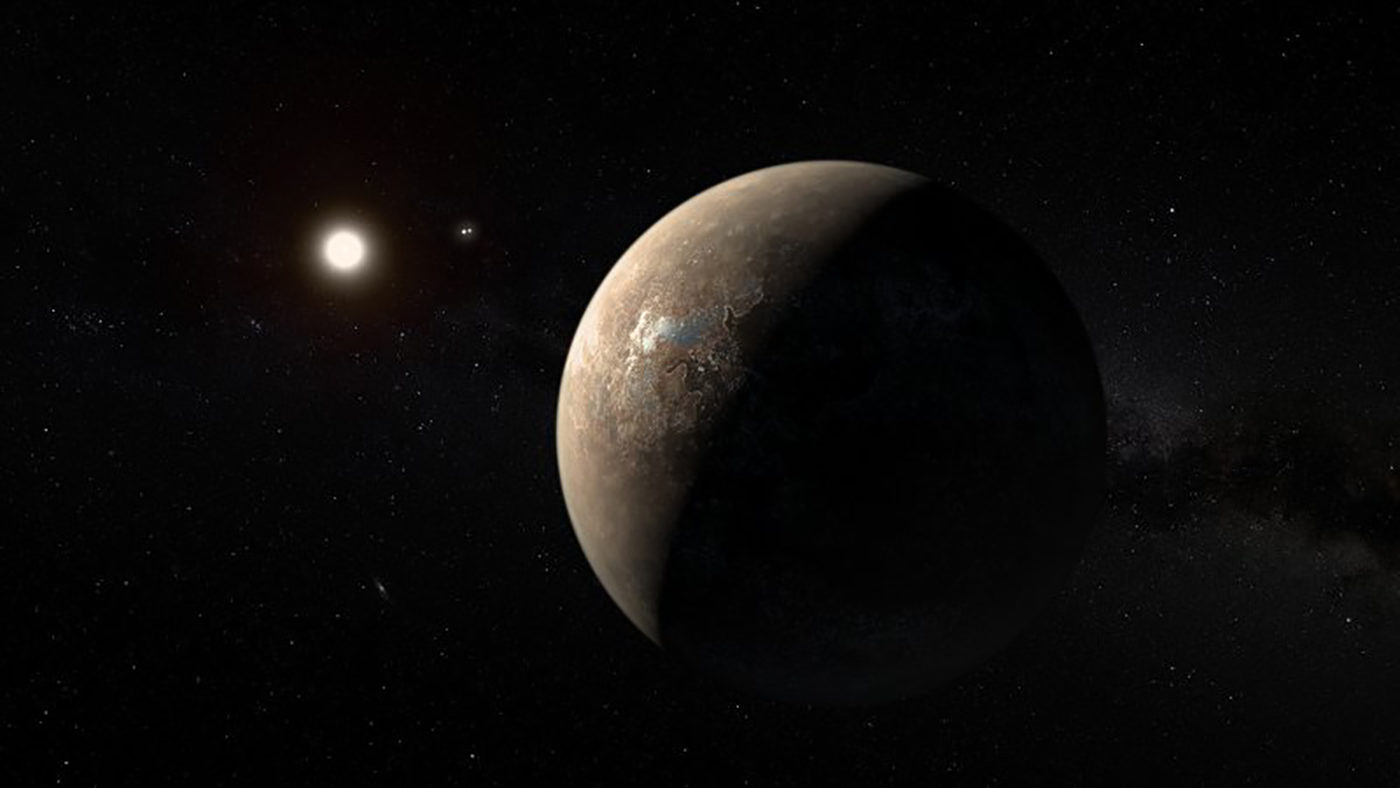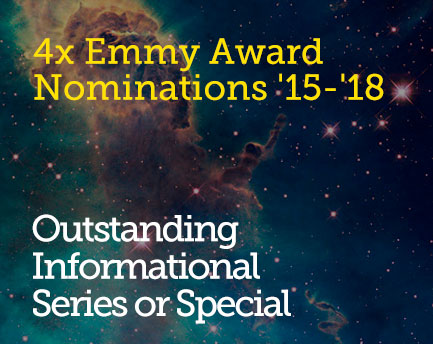September 17, 2019 8:52 pm
Types of Star Systems and What They Mean for Finding Earth-Like Worlds
Today’s guest blog post is by Peter Thompson an Astronomy enthusiast. Self-taught, he is constantly studying and researching this beautiful science. He shares his journey on Astronomy For Beginners.
Imagine scientists finding an Earth-like world out amongst the stars. Not only is the planet about the right size and mass, and about the right distance from its sun, but also has an atmosphere that contains a fair amount of oxygen in it. That could mean only one thing: Life!
We would know, once and for all, that our own beautiful “blue marble” in space is not alone in the cosmos. At a time like that, we might feel the urge to pull out our telescope in order to see the star so blessed with such a world.

Artist’s concept of the planet discovered orbiting Alpha Centauri C (Proxima Centauri). Notice the two bright stars between Proxima and its planet. These are the two main stars of the system—Alpha Centauri A and Alpha Centauri B. by ESO, M. Kornmesser (CC BY 4.0).
The more we learn about other star systems, the more it seems that planets are quite common. However, Earth-like worlds are not nearly as common. After all, only one planet in eight in the Solar System is habitable. The others are most inhospitable – either too cold or too hot, too thick an atmosphere or too thin, and none of them, except Earth, has liquid water, essential for life as we know it.
What Types of Stars Could Have Earth-Like Worlds?
A star has to have three key ingredients before we would be interested in looking for an Earth-like world. Without these ingredients, we would have no chance of finding a planet like our own Earth.
- A main sequence star that is at least 3 billion years old.
- A star that is rich in chemical elements.
- A star that could allow a stable orbit in its Goldilocks Zone.
What Types of Stars Would Be the Right Age?
The “main sequence” is the adulthood of a star. This is the period when the star has the most stable light output. During this period in a star’s life, a planet could become quite comfortable for life.
But not all main sequence stars live that long. The more massive stars use up their fuel more quickly, staying in the main sequence for only a few million years to only one or two billion years, depending on their mass. Our own G2V main sequence star is scheduled to live for about ten billion years before becoming a sub-giant, and then a red giant star. That leaves us 5.5 billion years. Right now, it is about 4.5 billion years old, so life has had plenty of time to form and to make our planet Earth a cozy place with lots of oxygen so vital to our animal life. It took many millions of years for plant life to convert a largely CO2 atmosphere into one of oxygen.
Three billion years also gave our star system plenty of time for the rocky debris to be cleared so that life has become relatively safe from heavy meteor showers – the kind of “rain” that kills. During the first two billion years, planets are still in a state of formation and heavy meteor infall.
Stars that are brighter and bluer than about F2V will leave the main sequence before their planets will have become sufficiently mature. So, the brighter, bluer main sequence stars are not a good place to look.
In the last few years, scientists have been able to determine a rough estimate of the age of individual stars, based on things like turbulence, rotation and the chemical enrichment of the stars as they grow older.
Yellow dwarfs like our sun, orange dwarfs like Alpha Centauri B, and even some red dwarfs may be prime locations to look for planets.
What Does It Mean for a Star to Be Rich with Chemical Elements?
The universe started with simple hydrogen. When stars were born, they burned the hydrogen in their cores to form helium. Very massive stars burned helium to form heavier elements. And when supernovae exploded, they formed all of the elements above iron on the periodic table.
Stars that are rich in other elements – things like carbon, iron, and even uranium – are far more likely to have planets made of elements other than hydrogen and helium. A planet needs these heavier elements for things like rocks and water, but also for the building blocks of life itself. After all, for our own types of living creatures, carbon is life.
Astronomers can tell the chemistry of a star by examining its spectrum – spreading the light out into colors and then by examining the dark lines that show up in that spectrum. Each line is associated with a specific element on the periodic table. As science writer Rod Martin, Jr. once pointed out, the gaseous atoms in the atmosphere of a star are like tiny tank (LC) circuits receiving the light at certain wavelengths – their “tuned” frequencies—and absorbing that specific color.
Scientists typically describe the richness of a star as a function of its iron content compared to the hydrogen content. And this ratio is then compared to a standard, like our own sun. This ratio, sometimes written “Fe/H,” represents the “metallicity” of a star. A positive metallicity means that the star is richer than our sun, while a negative metallicity means the star is poor in chemical elements.
You may have guessed, and rightly so, that even oxygen and carbon are considered “metals” in this chemical richness factor, though they are not strictly metals in the common, everyday sense.
So, we need a star that has an Fe/H number that is higher than about –0.25. Anything more negative than this would likely be too poor to have an Earth-like world. There could be exceptions, but they become extremely rare the more negative the number.
What Types of Stars Could Have a Stable Goldilocks Orbit?
Gravity can be a problem. If there is only one star, then there is no problem. The distance from the star where liquid water can exist could easily have a stable orbit. We’re not interested in distances farther than this, because they would make the planet too cold. And we’re not interested in distances closer to the star, because that would make the planet too hot. We want that in-between range of distances that is, as Goldilocks in the fairytale once said, “Just right.”
If a star system has two or more stars, then things can become a little complicated. What if the distance of one star from another is exactly the distance of the Goldilocks Zone? Then, an Earth-like world would be impossible, because it would either run into the other star, or the gravitational tugs would disrupt the planet’s orbit enough to send it hurtling out of the star system altogether.
If two stars orbit each other from a very short distance, then a stable Goldilocks Zone could exist around both stars as if they were one. This reminds us of the scene in the original Star Wars movie with two setting suns. The other possibility is that the two stars orbit each other far more slowly, and from such a great distance, that each star can have its own Goldilocks Zone. We find this arrangement next door in the Alpha Centauri triple star system. All three stars can have their own Goldilocks Zone.
There are other possible complications, but they are beyond the scope of this short article. There is always more to learn about astronomy.
Get the most out of StarTalk!
Ad-Free Audio Downloads
Ad-Free Video Episodes
Stickers & Mugs
Live Streams with Neil
Priority Cosmic Queries
Early-Access Videos
Learn the Meaning of Life
...and much more

 Become a Patron
Become a Patron

